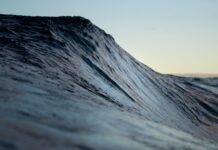The 2004 tsunami that obliterated the coastlines of South East Asian countries, crossing oceans at the speed of an airliner, is something most mariners would hope never to encounter. Nor freak or rogue waves which have long been a common occurrence but until relatively recently have remained anecdotal. That is, until 1 January 1995, when a huge wave was observed – and recorded – at the Draupner Oil platform in the North Sea. It was one of the first reliable measurements of a freak wave in the ocean and at a height of 25.6 metres, it was over two times the height of the waves that surrounded it.
Most Popular
Powering Africa’s e-mobility ambitions through trade
Africa has a unique opportunity to lead the next wave of industrial growth, and it’s not just a dream. From electric vehicles (EVs) to...
Navigating Troubled Waters. How to Turn a Crisis into a Sea of Possibilities
South Africa’s fishing industry, once a vital pillar of the coastal economy and a source of food security, is increasingly caught in a web...
What is the High Seas Treaty and Why Does it Matter?
There has been much hype about the United Nations High Seas Treaty at the United National Ocean Conference happening in Nice this week. But...
Tzaneen Dam Wall Project Delayed
The raising of Tzaneen Dam Wall, which was scheduled to be completed in March this year, has been delayed a further year.
The overall progress...

















